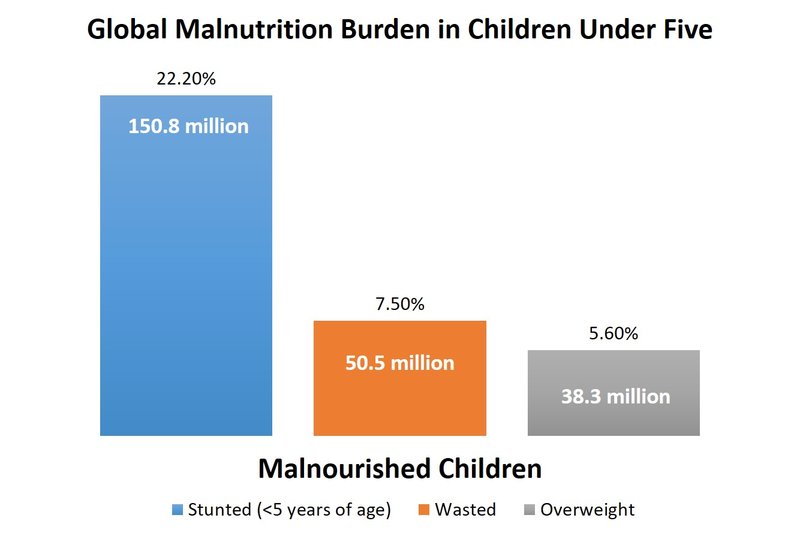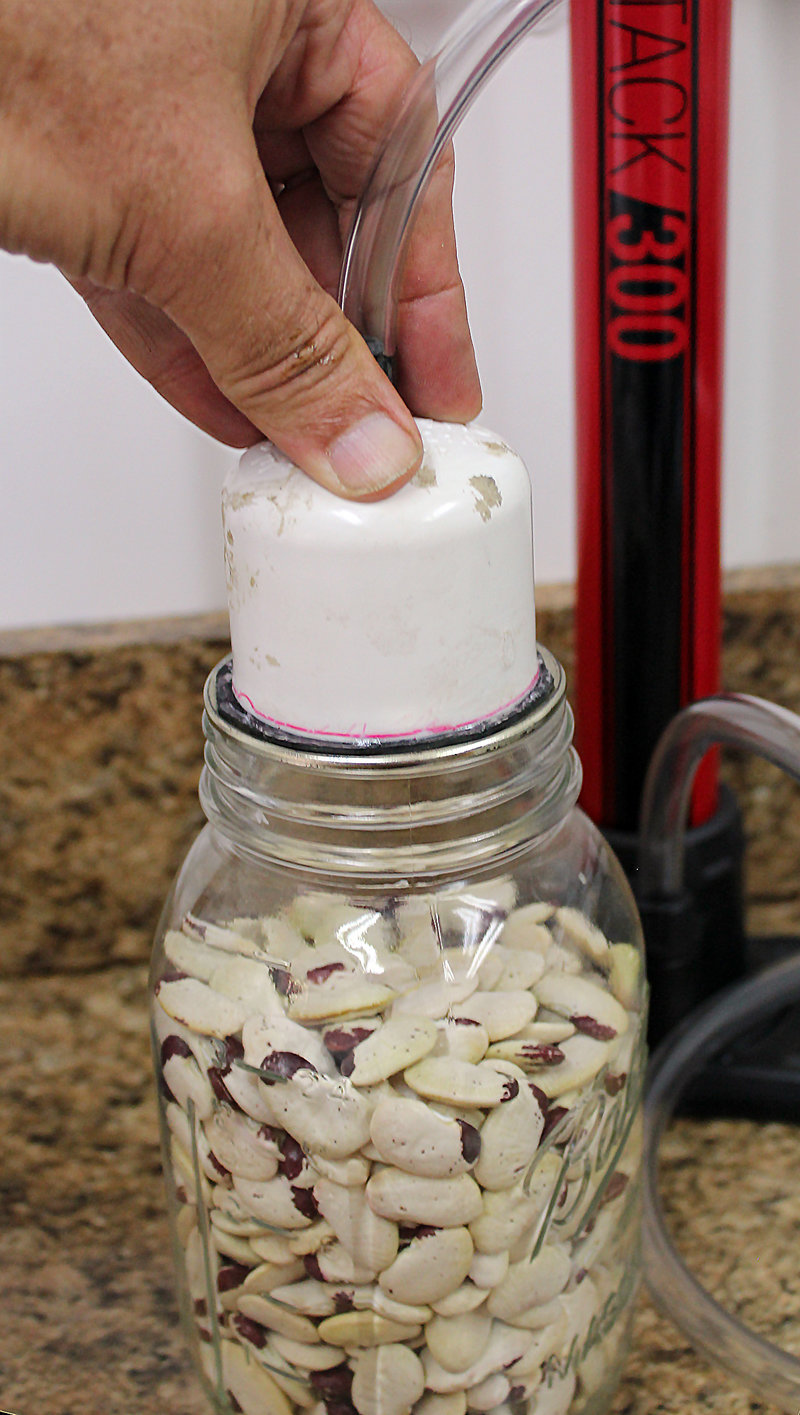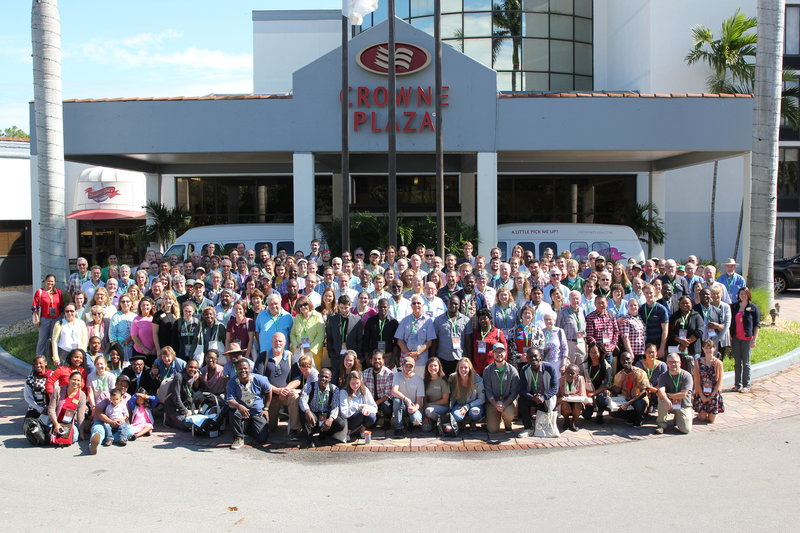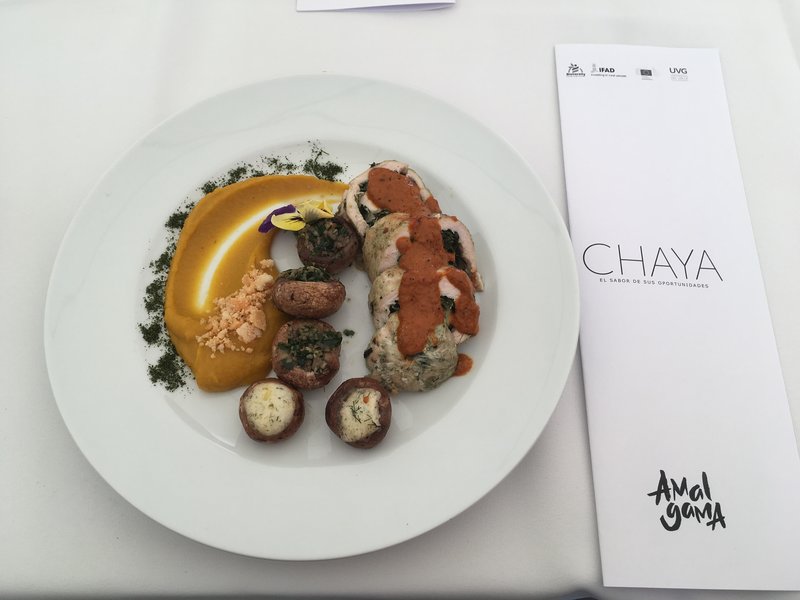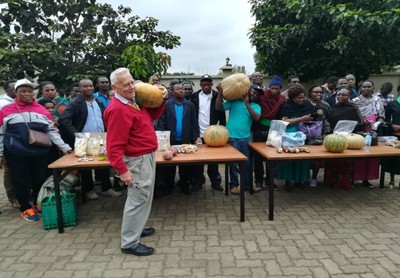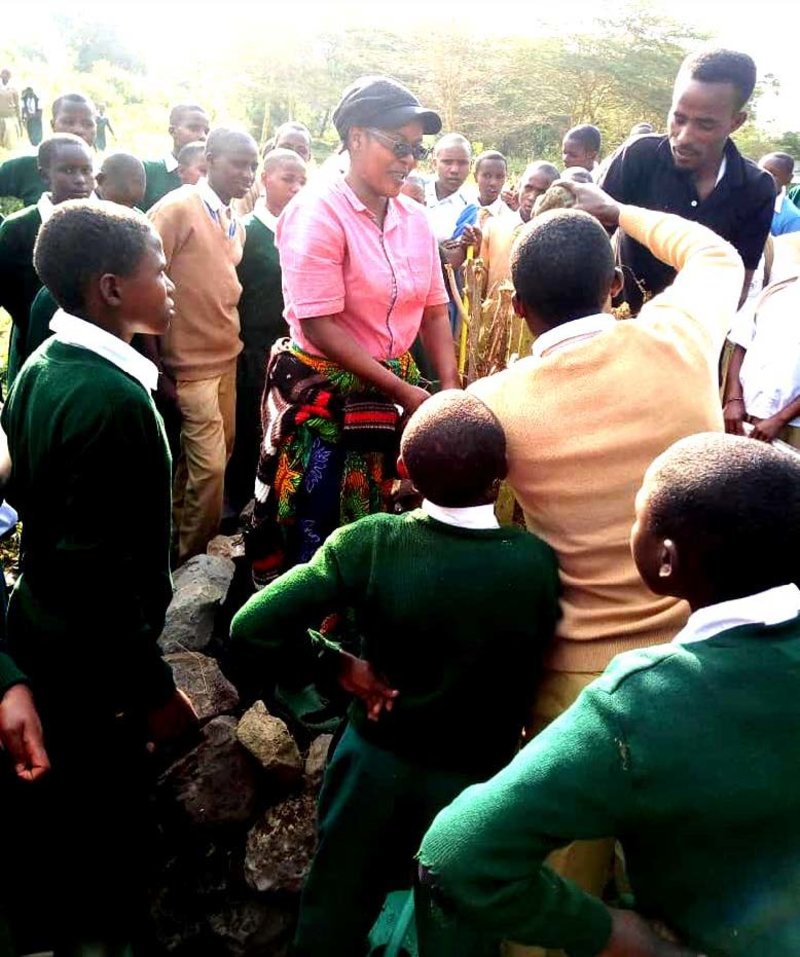Habari mpya za ECHOcommunity
EDN Issue 142 - Now Available 2019-01-30
In this issue:
- Understanding Agriculture-Nutrition Linkages
- EIAC 2018 Topic Summaries
- Echoes from our Network: Intercropping Native Shrubs
- From ECHO's Seed Bank: Rollinia
- Books, Web Sites and Other Resources: Feed the Future Technical Briefs
Understanding Agriculture-Nutrition Linkages
By: Cecilia Gonzalez
Excerpt:
In recent years, much attention has been given to the connections between agriculture and nutrition in the development sector as a whole. These connections may seem obvious: we get nourishment from the food we eat, and we eat food produced by agriculture. However, the claim that agriculture interventions (e.g. home gardens) can improve nutrition has come under scrutiny, because of the lack of evidence to substantiate it (Masset et al. 2012; Girard et al. 2012).
At the same time, recent efforts have helped us to better understand these linkages and to begin to close the evidence gaps. Agriculture plays an indispensable role in development, and though it doesn’t automatically improve nutrition, its potential to do so is undeniable. The recent efforts have provided important frameworks for program design and for implementing agriculture interventions that aim to improve the nutrition of vulnerable populations. These frameworks for “nutrition-sensitive agriculture” interventions help us make sense of complex problems and identify pathways to solutions.
Vacuum-Sealing Options for Storing Seeds 2019-01-15
Quality seed is crucial for initiatives aimed at preserving or increasing crop diversity. Whether seeds are purchased or grown out and collected in the field, they typically need to be stored until conditions are right for planting. How those seeds are stored affects how many will germinate and grow when planted.
Seed survival during storage depends on seed moisture content, air temperature, and oxygen levels. Increases in these factors causes seeds to metabolize their food reserves more quickly, shortening storage life. Seed moisture content is influenced by the humidity of the air in the storage space or container. Hot, humid conditions lead to rotting of seeds. For these reasons, being able to improve seed storage conditions is highly beneficial to farmers and development practitioners, particularly those working in the humid tropics.
Vacuum sealing seeds is an effective way to extend their viability, for two main reasons. First, maintaining seeds under a vacuum keeps humidity out of the storage container, which is very important in areas where humidity is high during at least part of the year (e.g. during rainy season).
This new ECHO Technical Note presents ways to remove air from seed containers, for the purpose of extending the viability of stored seeds. The technologies presented here are most relevant to community-level seed banks or development practitioners looking for options for storing small volumes of high-value seed for planting. They would not be practical for storing large quantities of grain for human or animal consumption. With the exception of commercial vacuum sealers, the technologies presented are inexpensive, and many can be constructed with local materials.
Gardening on Rooftops & Other Above-Ground Locations 2019-01-03
New book by ECHO founding CEO Dr. Martin Price
A major cause of hunger and malnutrition is a lack of income sufficient to purchase food. Anyone with enough income will be able to obtain food, except perhaps after major disasters or in a war zone. For many, an option of last resort is to find a piece of land somewhere and try to grow enough to at least keep the family alive. But how does someone in an urban area with nonexistent financial resources get land to cultivate?
This book highlights techniques for most rooftop gardens. These techniques can be done at a fraction of the expense that is normally considered necessary andy do not require specially engineered buildings to make sure that the roof can handle the weight of the soil.
Case Study On Creative Capacity Building for Entrepreneurs 2018-12-10
Guest Post: Magreth Omary
Mbauda Tanzania
My name is Magreth Omary and I am married and God has blessed me with 4 children. My income comes from making batik cloth, stools, embroidery work and soap which gives me most income. I own a small shop, a meeting point of my customers who love my products.
Three years ago I was able to attend a Creative Capacity Building training which involved farmers, local fabricators and entrepreneurs like me. Prior to the CCB training, I faced a challenge of cutting solid soap into straight, attractive bars. This gave a low quality and price to my product compared with factory products.
2018 ECHO International Agriculture Conference Videos Now Available 2018-12-04
The celebration of the 25th annual International Agriculture Conference featured many exceptional speakers, opportunities for networking and hands-on training. For those of you who were unable to attend this year, or for those wanting to review the material presented we are excited to announce that the videos of the plenary sessions are available now for everyone.
EDN Issue 141 - Now Available 2018-10-17
In this issue:
- Shea Nut: The Butter Tree
- For How Long Should Chaya Leaves be Boiled?
- Green Leafy Vegetables: Leaf Powder for Improved Nutrition
- From ECHO's Seed Bank: Jewels of Opar, An edible ornamental
- SPRING Nutrition-Sensitive Agriculture Training Resource Package
Shea Nut: The Butter Tree
By: Gene Fifer
Excerpt:
The arid region directly south of the Sahara Desert (the Sahel), which stretches from Senegal to Ethiopia, has limited sources of fats and oils. Dairy products from cows and sheep are scarce and traditional oilseed crops are few. This is problematic for human health since fats and oils contain lipids essential for vitamin absorption and are a high-calorie energy source.
The shea nut tree (Vitellaria paradoxa) is a widely distributed and traditional source of vegetable fat in the Sahel for the Bambara, Dyula, Fulani, Hausa, and Wolof peoples. Some of its common names suggest its dietary importance: bambouk butter tree, galam butter tree, and arbre à beurre. Other common names in many different languages include karité, cárei, carité, lulu, sirreh, se, berekunan, tamba, taanga, and kareje. Fruity pulp and butter from shea nut trees are important food sources during the ‘hunger months’ of the early rainy season, before annual crops are harvested. However, even though the shea nut tree is widespread and traditionally used, it is underutilized because of the high amounts of labor, fuel, and water that are required to process it. The grueling and resource-intensive butter-making process can be streamlined by modern, low-tech methods that could expand its use as a hedge against food insecurity.
Revalorizing Ancestral Mayan Crops 2018-10-12
There is currently a movement among scientists, nutritionists, development workers, and agriculturalists to recognize, revalorize, and promote the treasures of Guatemalan food culture for the health and well-being of the most vulnerable. In March 2018, I had the privilege to attend events held to this end including a conference titled, “Chaya in Guatemala: Participatory Consultation on Needs, Challenges, and Opportunities,” and a Chaya Processing Workshop hosted by Bioversity International and Universidad del Valle de Guatemala (UVG, Del Valle University of Guatemala); and also a meeting titled “Revalorizing Native Plants with High Nutrient Value to Promote Food Security and Commercialization,” hosted by Asociación Gremial Empresarial Rural (AGER, Association of Rural Entrepreneurs) and Red de Alimentos Ancestrales Nutricionalmente Mejorados (Red Wa, Network of Nutritionally Improved Ancestral Foods).
The Value of a Seed: Growing a Network of Community Level Seed Banks in Asia 2018-09-20
As an organization that seeks to equip people with agricultural resources and skills, we often find ourselves coming back to the seed. Again and again we witness the value of saving open-pollinated seeds, shedding light on locally adapted and underutilized plants of merit, and researching innovative low-cost seed storage technologies. These activities form the foundation of ECHO’s ability to empower others in their endeavors to improve food and agricultural systems around the world.
Building on a longstanding history of seed bank operations, first in Florida, and now Asia and Africa, ECHO continues to expand its capacity for placing seeds into the hands of those in need. In 2009, with the establishment of Asia’s Regional Impact Center and Seed Bank, the first step was taken in an ongoing process to house seeds of regional merit and local importance on location. To date, ECHO’s first regional seedbank is striving to meet a growing demand for locally-adapted, open-pollinated seed from within our network, and its success attests to the wisdom of its establishment. Distributing over 4,600 trial seed packets in 2017, from a selection of 175 different varieties, the Asia Seed Bank serviced network partners in 29 countries, with seeds grown and produced right here in SE Asia!
In light of these achievements however, demand for more seeds has stretched our capacity to fulfill the needs of a massive Asian audience, thus requiring our own explorations for further growth. This, combined with a growing challenge of moving seeds across borders, tightening seeds laws, and continued debates over ownership of genetic materials, has forced us into thinking very intentionally to the future of our seed banking activities. These questions have pushed us to consider how we might continue to serve our network in this critical realm.
Seed Exchange From Mbeya to Arusha, A Story of James and Jennifer Kahurananga 2018-09-05
Guest Post from ECHO East Africa
By Malvery Begley, US Peace Corps volunteer
Arusha Conservation Agriculture Forum (ACAF) was formed after the first Farming God's Way training, when participants wanted to support conservation agriculture. Chrispin Mirambo was the first secretary and since the beginning of ECHO, ECHO has taken on a main role to host and be ACAF’s current secretariat. ACAF members are comprised of various NGOs and governmental organizations within the Arusha area; TPRI, MWIVATA, Horticulture Tengeru, local farmers, journalists and teachers make up the majority of members. These stakeholders meet after every three months to discuss current issues in conservation agriculture and other work that is being implemented. The ACAF members have benefited from learning various techniques and better practices from surrounding organizations and institutes in the Arusha region of Tanzania. In 2014 ACAF created a seed exchange initiative where local farmers can exchange indigenous seed varieties with other farmers. Since ACAF has been established, the seed exchange has been held three times. Members of ACAF and participants of the seed exchange program have encouraged ECHO to continue and increase the program because of its huge benefits to farmers.
PITA Project Has Opened Our Eyes 2018-08-13
In Meru district where this project is offered, farmers grow bananas and coffee in the highlands, and maize and beans in the lowlands. Many are also involved in small commercial horticulture. They mainly depend on surplus for cash but primarily focus on food crops, growing vegetables for many years for different purposes, especially those areas with good water sources which enable them to water their vegetables even during the dry season. In the past the population was low and there was plenty of land. Now many lack adequate land or water, and self-reliant vegetable production is no longer so easy; many people have sold their land or inherited very small parcels, causing them to be discouraged from gardening. An increase of crop pests, higher costs of inputs, and a mentality that farming is not for aspiring youth has hindered youth engagement in home production of vegetables. In recent years many families struggle with malnutrition in the area.
